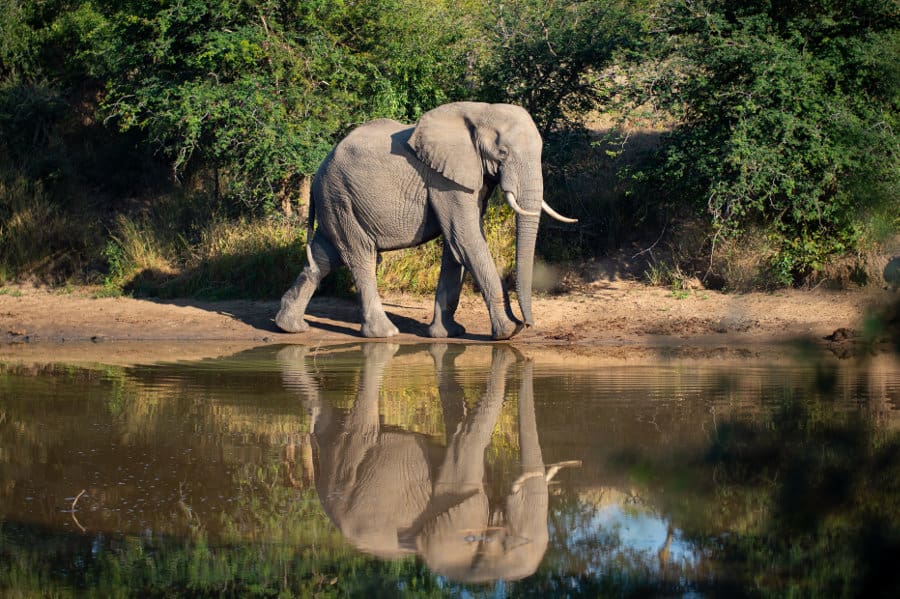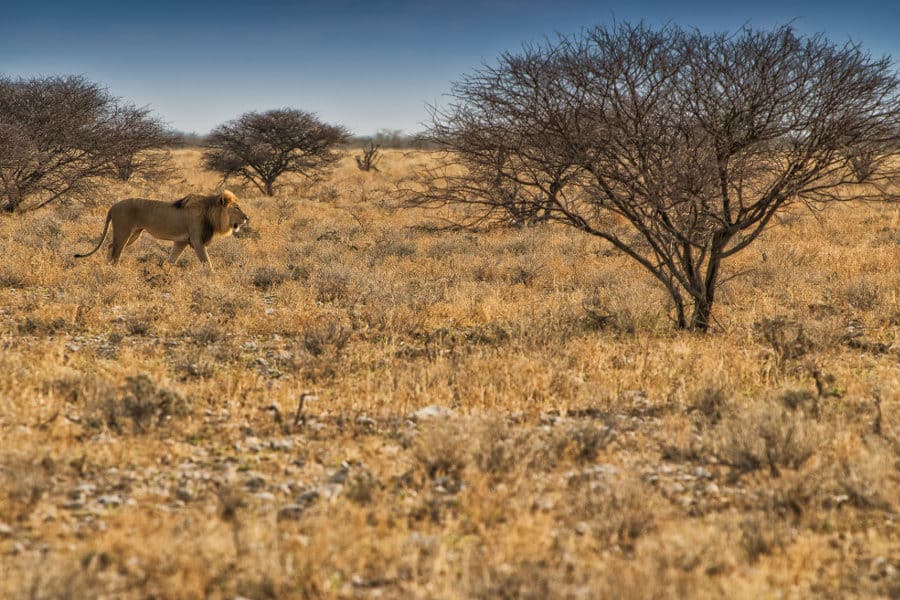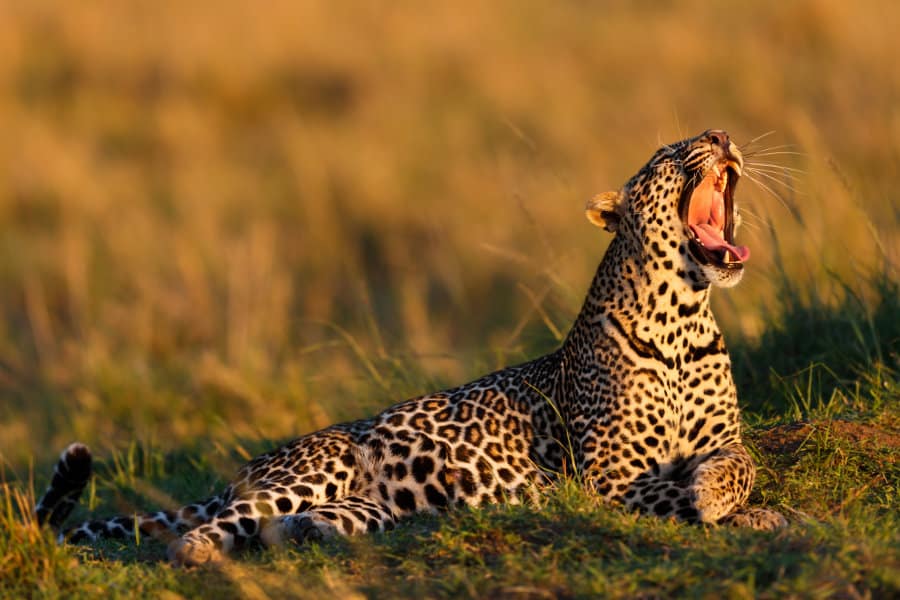African elephants, gigantic in size and highly socially intelligent, preside over the plains of Africa. Moving in herds of up to 70 members or more, these giant animals are a formidable force. Led by matriarchs, they communicate using advanced vocal and non-vocal means.
Elephants play a crucial role in maintaining their ecosystems, yet their declining numbers may result in an upset to this delicate balance.
These majestic creatures are fascinating and complex, with surprising capabilities. They also hold the title of plenty African ‘accolades.’
Check out these African elephant fun facts to learn more about the impressive animal.
1. They’re the Largest Land Animal

How big is an African elephant? Well, they’re the largest land mammals in the world. They tower over the savanna grasslands at around 3 meters tall and mow down trees under their 6 tonne weight as they walk.
Their impressive size is one of the most well-known facts about elephants. But did you know that it takes over half of their life, around 35 years, to reach full size?
The largest elephant ever recorded fell victim to a hunting expedition in Angola. He was as large as 3.96 meters at shoulder height and weighed a whopping 11 000 kg – that’s the weight of around 200 people!
2. Their Trunks Are Incredible
An elephant’s trunk is highly dexterous and has many functions. It’s essentially a really long nose with upgraded features. Elephants use their trunk for smelling, breathing, trumpeting, and drinking. Their trunks have around 40 000 muscles, making them very useful, and highly sensitive.
Aside from the standard nose functions, elephants use their trunks to grab things (like branches of delicious leaves), and to spray themselves with water to provide relief from the heat.
On the tip of an African elephant’s trunk are two opposable extensions, much like fingers. These ‘fingers’ allow elephants to pick up smaller things – such as the delicious marula fruit.
3. Elephants Have Thick Skin
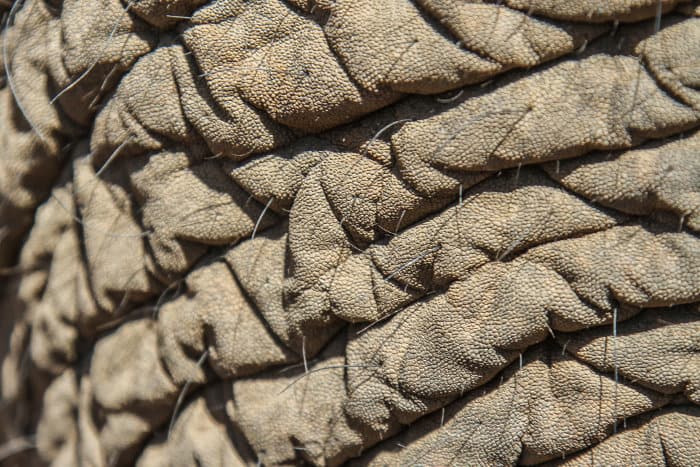
How thick is elephant skin? Thick enough that it would take a lot of insults to offend an elephant. An elephant’s skin is around 2.5 cm thick and covered in wrinkles. These wrinkles help to keep the animal cool by retaining water.
In fact, the cracked and wrinkled skin retains up to 10 times more moisture than a smooth surface. This comes in handy under the scorching African sun. It helps to regulate the elephant’s body temperature and prevent dehydration.
4. Mud Makes For Great Sunscreen
Elephants may have thick skin but it’s not as tough as it looks. Their skin is quite sensitive, especially to the sun. These intelligent creatures thus use their trunks to spray mud and dust over their bodies, which protects their skin from the sun.
The natural sunscreen also protects the elephants from parasites.
5. Fun Facts About Elephants’ Tusks

The impressive ivory tusks are actually incisor teeth that appear when an elephant is around two years old. The female and male elephants both have tusks, though males’ tusks tend to be larger.
These impressive, protruding incisors never stop growing. Today, there are a few Big Tuskers in Africa carrying 100 kg of ivory that reaches the floor.
Elephants use their tusks to assist with eating by stripping bark from trees and digging for food and water. They also use massive tusks for fighting or defense.
6. Elephants Like to Talk — and We Can’t Always Hear It
Elephants are extremely intelligent creatures with intricate social dynamics. They communicate in a variety of ways and are very vocal animals, yet have means of non-vocal communication, too.
From the quintessential trumpet call to squeals, snorts, rumbles, and screams, elephants use more than 70 vocal calls to communicate with their herd.
However, they also make use of vocal calls that have such a low vibrational frequency that humans cannot hear them. This vibrational sound is so powerful that it can travel over long distances. It’s a useful call for communicating with lost herd members.
Aside from vocal communication, elephants use up to 160 gestures, expressions, and visual signals to communicate. This includes cuddling each other with their trunks and smelling one another.
7. Elephants Live For a Long Time

African elephants are the largest land mammal and have the biggest brains. To add one more title to their crown: aside from humans, elephants have the longest life-expectancy of any land mammal.
These animals live up to around 70 years old in the wild.
8. Baby Elephants Are Big, Cute, and Evolved
Elephant calves, with their wildly swinging trunks and jovial behavior, are some of the cutest animals in Africa. They’re also large. The weight of baby elephants is around 100 kg and they stand at about 1 meter.
An African elephant has a gestation period of 22 months – almost two years! Which is understandable, considering the size of the calves.
Alongside being massive and adorable, baby elephants are also highly evolved. They are able to stand within 20 minutes after birth and are walking in one hour. They are one of the most advanced species in terms of newborn abilities.
Because calves are able to keep up with the herd just two days after being born, elephants are able to keep moving in the search for food and water.
9. Herds Are Female-Led
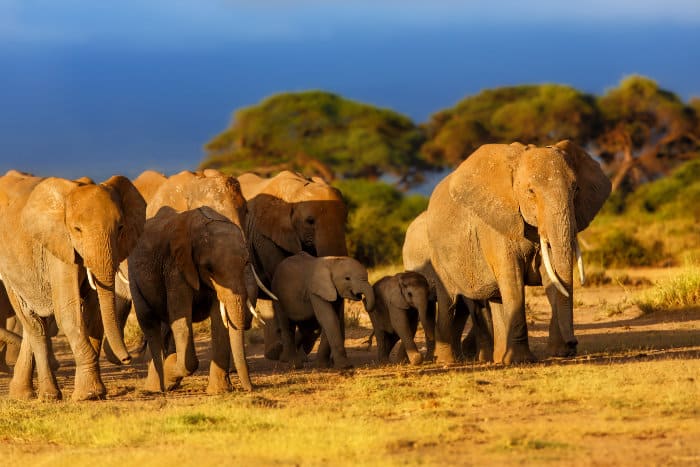
Elephant herds are matriarchal, meaning that the cows lead the group. The matriarch is typically the oldest and largest female in the group. She oversees the rest of the herd, which consists of multi-generational females and their calves. These family units are known as breeding herds.
Male elephants, or bulls, are usually solitary. However, they do sometimes join up with other bulls in a loose coalition. Males stray away from their herd anywhere between the ages of 10 to 19 years of age.
10. They Spend Their Days Eating
You can imagine that elephants need a lot of food to fuel their massive bodies. They spend their entire day (around 12 to 18 hours) eating! So, how much do elephants eat a day? An adult on average consumes over 130 kg of roots, grass, fruit, and bark.
As for the calves, they drink almost 10 liters of their mother’s nutrient-rich milk every day for the first six months of their lives. After that, they supplement their diets with vegetation yet aren’t completely weaned until two years old.
Mature African elephants are also thirsty animals, drinking up to 200 liters of water daily.
11. Memory Like an Elephant

Elephants don’t just hold the title of the largest land animal. They also have the largest brain of any land animal.
Their massive brains weigh up to 5 kg and they have large, dense temporal lobes – the part of the brain responsible for storing memory. In fact, their temporal lobes are the biggest relative to the body size of any animal, including humans.
The expression ‘elephants never forget’ is not merely a bumper sticker phrase, it is a cool fact about elephants that many researchers believe to be true.
12. African Elephants Are Ecosystem Engineers
African elephants are a keystone species, as they assume the role of ecosystem engineers and are a vital cog in their environments. Elephants mold their environments in such a way that allows other animals to thrive.
Using their tusks, elephants will dig up riverbeds in the dry season creating springs of water that other animals enjoy. They are also important seed dispersers as they spread seeds through their dung.
Zebras, wildebeest, and other grazers benefit from elephants uprooting trees and thereby opening up the plains.
13. Poaching is the Biggest Threat to Elephant Life
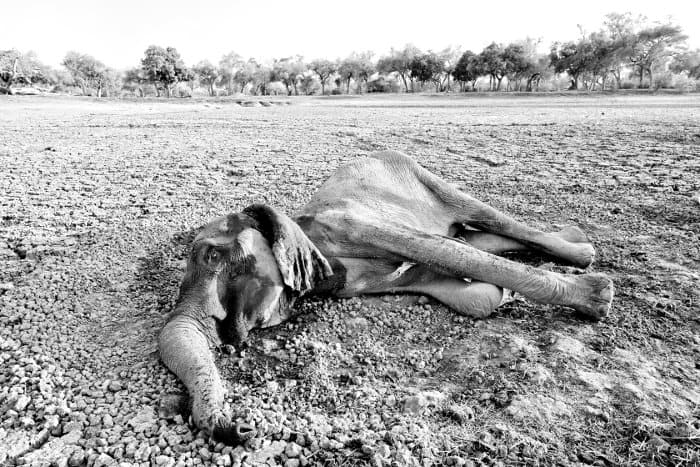
African elephants don’t technically have any natural predators. They’re enormous and sport two menacing tusks, making them unappealing as prey. Only very desperate and hungry predators will attempt to take down an elephant, and are rarely successful and often injured or killed.
The most prominent threat to the elephant population is humans. Hunting and poaching have wiped out 90% of the African elephant population over the last century.
Poaching for the ivory trade continues to threaten the existence of these massive, majestic creatures.
Seeing These Interesting Facts About Elephants in Action
There are few things more wonderful than witnessing an elephant trumpeting to its herd or splashing around in the water. Watching a calf get the hang of using its uncontrollable trunk will undoubtedly bring a smile to your face. And experiencing its impressive size in person will leave you in awe.
There are plenty of places throughout Africa to encounter the incredible African elephant in the wild. Simply book a safari at your dream wildlife destination to experience these African elephant facts in action.
